Learn how cover crops help to maintain soil quality and crop productivity.
Introduction
Cover crops play an important role in maintaining soil quality and productivity on Ontario farms. Traditionally, they have been associated with reducing soil erosion and adding organic matter to the soil. Indeed, they are very strong in these categories: according to the 2020 Ontario Cover Crop Feedback Report, a majority of farmer respondents practicing cover cropping saw erosion and organic matter benefits. But they can do much more. The report also found that over 40% of growers observed improved water infiltration and fewer weeds from cover crop use, 37% saw reduced compaction, and 22% noted a lesser need for nitrogen (N) fertilizer. Cover crop species selection and management plays an important role in which of these benefits are realized.
Read on to learn more about key cover crop functions and how to maximize the value they bring to both soils and cropping systems.
Erosion reduction
Cover crops do exactly what their name implies: cover the soil. A cover crop such as cereal rye is commonly used to cover and protect the soil surface from wind and water erosion. The top growth protects the soil surface while the roots bind and stabilize soil particles (Figure 1). Cover crops may be planted over a whole field for erosion protection, or they may be selectively planted in the most erosion prone areas, such as sandy knolls for wind erosion or areas of concentrated flow (Figure 2) for water erosion.
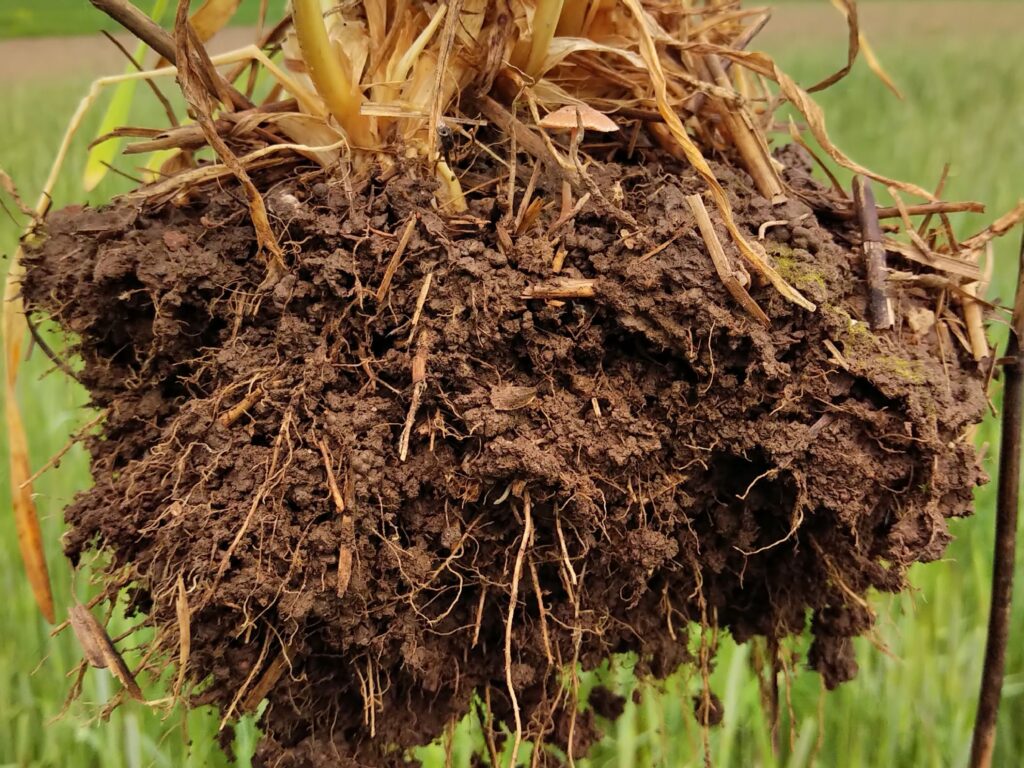
Figure 1. Fibrous cereal rye roots binding soil together.
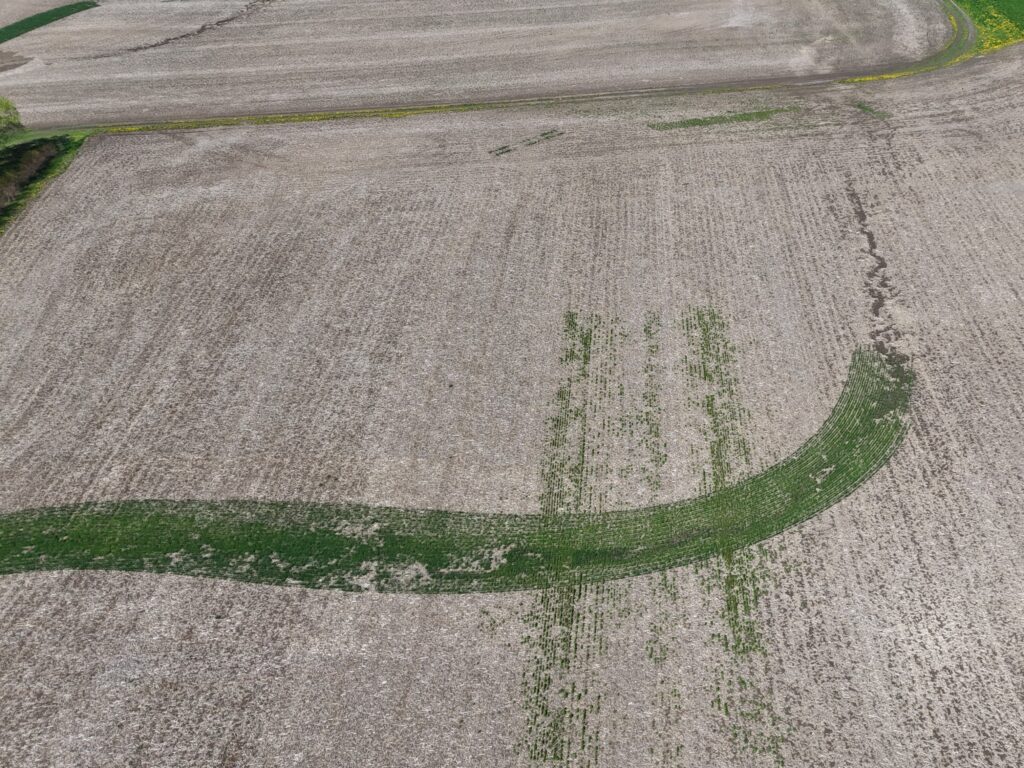
Figure 2. Winter wheat cover crop seeded along a concentrated flow path.
Good stand establishment and vigorous growth is important to ensure adequate erosion protection. For the most erosion prone areas, this can be a challenge. For example, it is difficult to achieve a growthy cover crop on high sand knolls. A poor stand and growth can be due to a combination of low organic matter, low pH, and droughtiness. Additionally, such knolls are prone to wind erosion and may “blow out” over winter due to the lack of cover crop protection and if there is little snow cover. It is essential to plant into moisture and do so early enough in the fall to achieve sufficient growth for soil protection going into winter.
Soil organic matter contribution
Cover crops contribute to soil organic matter (SOM) through a variety of mechanisms. They add carbon through aboveground material and roots, as well as through root exudates (sugars, amino acids, and other organic compounds) that feed soil microorganisms, which in turn create stable organic matter. They can also help to retain soil organic matter through reduced erosion of topsoil.
The impact of cover crops on organic matter improvement varies depending on the cover crop species, the amount of dry matter it produces, and the soil in which it’s grown. Table 1 provides dry matter ranges (aboveground residues only) for some common cover crops established in late summer and early fall in southwestern Ontario. Dry matter production varies greatly due to several factors, but higher amounts tend be achieved with earlier seeding, higher seeding rates, and later termination.
Table 1. Typical aboveground biomass production from common cover crops grown in Ontario.
| Cover crop | Dry matter produced in kg/ha (lbs/acre) |
| Red clover | 2,700-4,500 (2,400-4,000) |
| Oats | 1,100-5,600 (1,000-5,000) |
| Cereal rye | 500-9,000 (450-8,000) |
| Oilseed/Daikon radish* | 2,200-7,300 (2,000-6,500) |
*Not recommended to be grown as a monoculture
Global research has found that cover crops contribute anywhere from 0.2 to 0.56 tonnes of carbon per hectare per year (Van Eerd et al., 2023), which equates to approximately 350-950 kg soil organic matter per hectare per year. Based on a 6-inch depth and average bulk density, this equals a 0.02-0.05% increase in SOM per year – a modest improvement that would require 20-50 years to improve SOM by 1%, assuming other cropping practices maintain steady organic matter levels. Faster change, however, can be possible. Ontario research on a sandy loam soil near Ridgetown (Figure 3) found that cover crops grown regularly in a field crop-processing vegetable rotation sequestered 10-20 tonnes of soil carbon/hectare over 9 years, or 1.1-2.2 tonnes of carbon per hectare per year, compared to a no cover crop control treatment (Chalal et al., 2020). Cover crops also increased processing vegetable yields by 4-16% on average and reduced yield variability. This finding demonstrates what may be possible when strong cover crop growth is prioritized in a responsive soil.
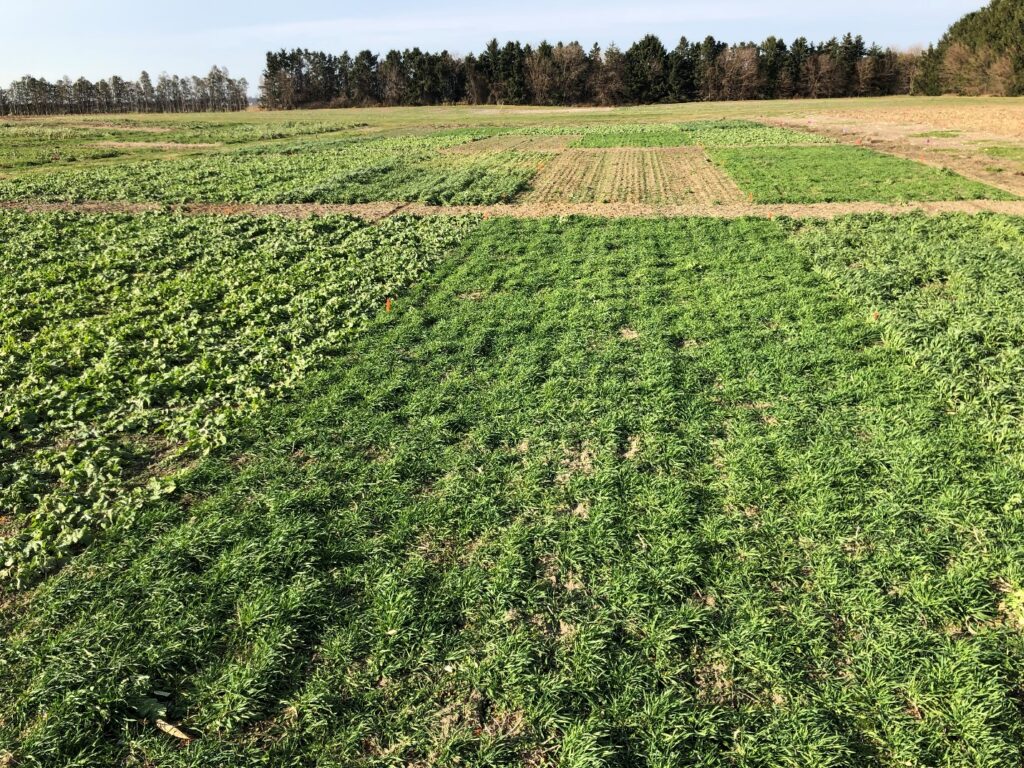
Figure 3. Cover crops in a field crop-processing vegetable long-term trial near Ridgetown, Ontario (photo: Dr. Laura Van Eerd).
Nutrient loss reduction
Certain cover crops are excellent scavengers of nitrogen left behind by the main crop or from manure applications. Among the top-rated species for this function are cereal rye, sorghum-sudangrass, and cereals like spring or winter barley and oats (Figure 4). Even certain legumes, such as red clover and alfalfa, do a very good job capturing extra N in soil.
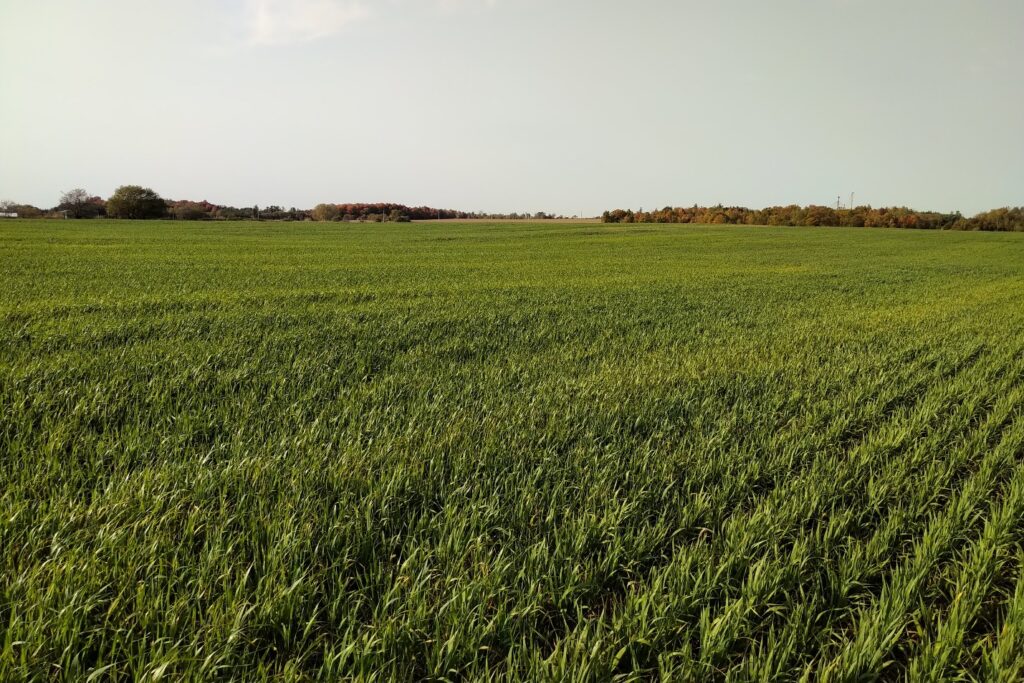
Figure 4. Oats, with their fibrous root system, are a very good nitrogen scavenger option.
By capturing excess nitrogen in the soil profile ahead of winter, cover crops help to reduce nitrate movement to shallow aquifers and subsurface tile drains. The nitrogen is released once the plant residue breaks down, often in the following growing season, with the possibility of N transfer to the next crop. Cover crops that winterkill and have a narrow carbon-to-nitrogen ratio, such as radish, release stored N too early in the spring, which results in environmental losses and poor N transfer. Those that release nitrogen too late in the summer, like mature (e.g., headed out) cereal rye, provide excellent N capture and environmental benefit, but do not release nitrogen early enough for N-demanding crops grown afterward. Fall-terminated clovers tend to release nitrogen in early summer, which matches uptake patterns for crops like corn.
When it comes to phosphorus (P), cover crops have been proven to reduce P losses at the edge of field associated with soil erosion. However, in certain climates they can contribute to greater losses of dissolved phosphorus overland or through tile drains. Ontario research suggests that cover crops are less likely to contribute to phosphorus losses in regions with greater snowpack that insulate plants from freeze-thaw cycles over winter (Macrae et al., 2021). In areas with minimal snow cover, however, greater P leaching and losses from cover crop residues is expected. Selection of overwintering species like red clover and cereal rye can reduce risk of dissolved P losses during vulnerable times throughout the non-growing season.
Soil fertility improvement
Legume cover crops can fix nitrogen to supply a portion of the needs for the following crop. Ontario research has shown an average nitrogen credit for corn from frost-seeded red clover (Figure 5) of 67-82 kg-N/ha (60-73 lbs-N/acre). Organic growers often rely significantly on clover-based cover crops to produce nitrogen for the subsequent crop in rotation. Achieving a uniform stand of red clover can be a challenge in Ontario, particularly as winter wheat yields have increased.
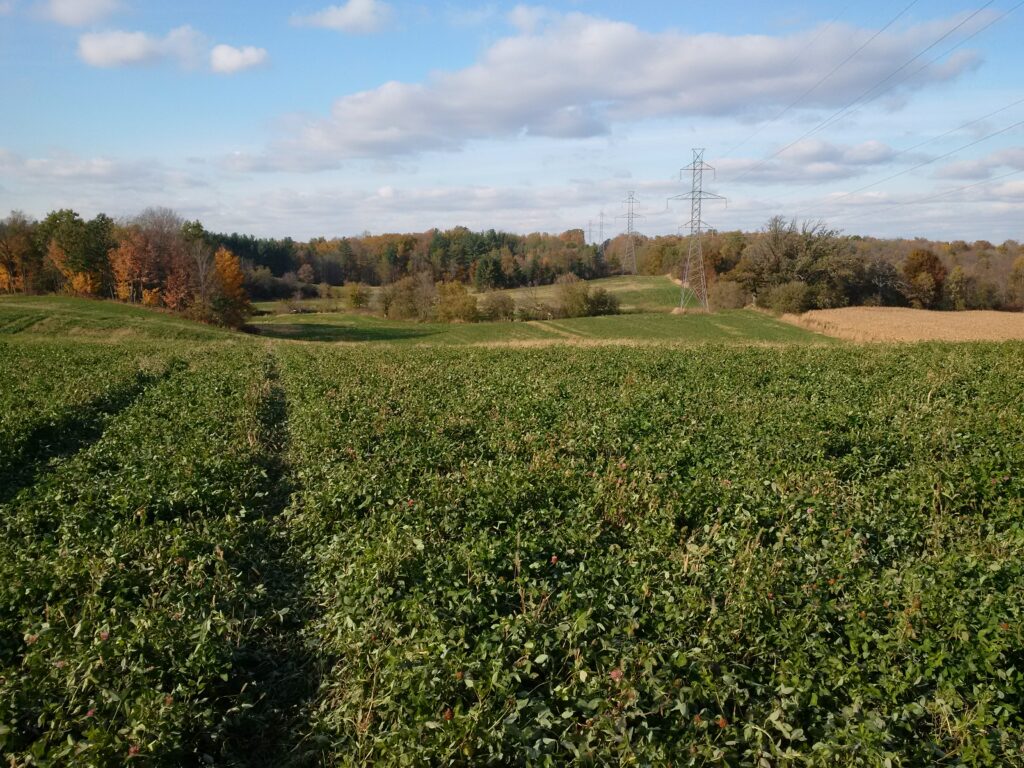
Figure 5. A uniform stand of frost-seeded red clover growing after winter wheat harvest.
The most common legume cover crops grown according to the 2020 Ontario Cover Crop Feedback Report were: red clover (31%), peas (28%), crimson clover (22%), and hairy vetch (12%). Alfalfa, white clover, and yellow blossom sweet clover are less commonly used species within field crop rotations. Nitrogen credit values for corn grown after crimson clover, hairy vetch and field pea cover crops have yet to be determined for Ontario.
Some cover crop species such as buckwheat are credited with making phosphorus more available to other crops through a combination of organic acid release, enzyme activity and high root density. Deep-rooted cover crops cycle nutrients up from deep in the soil profile and bring them closer to the surface where they may be more accessible to succeeding crops.
Pest reduction
Cover crops can have positive or negative effects when it comes to plant pests. When chosen and managed carefully, cover crops may assist in managing pest populations.
Some cover crop species may be a non-host for a pest or may release materials that are toxic to the targeted pest. For example, many common cover crops have been rated for their ability to support root lesion and other nematode populations. Specific varieties of marigold (Crackerjack and Creole) and pearl millet (CFPM101) do not support or do not allow the nematode to reproduce. Other cover crops like some mustards, particularly those with high glucosinolate and euricic acid levels in the plant tissue, can create a “natural fumigant” through the chemical breakdown of these materials. The amount of green plant material that must be tilled into the soil for this to be effective is often difficult to achieve under field conditions. Establishment of a strong stand and a minimal weed population within the cover crop are critical for these methods of nematode reduction or suppression to be effective.
Soybean cyst nematode (SCN) (Figure 6) causes the most economically important disease of soybeans in North America. According to the Crop Protection Network, Ontario lost an estimated 3.4 million bushels of soybean yield due to SCN in 2024 (CPN, 2024). The effects of short time-period cover crops on the biology of soybean cyst nematode are not well known. Certain species may be able to reduce SCN populations by acting as trap crops. Other species have been shown to have a residual negative effect on reproduction of SCN on the succeeding susceptible soybean crop (Harbach and Tylka, 2022). Research done at Agriculture and Agri-Food Canada’s Harrow station found that a longer timeframe of rotational non-host crops had the greatest effect in reducing populations of SCN.

Figure 6. Soybean cyst nematode cysts attached to roots.
Research in Ontario on rye cover crops used as wind strips and in no-till systems for processing tomato production found that rye will act as a physical barrier to pests. Dr. David Hunt and Dr. Al Hamill of AAFC in Harrow documented that rye cover crops interfere with Colorado potato beetle movement early in the spring during tomato transplanting.
Cover crops can also provide habitat for bees and beneficial organisms (Figure 7). Predatory mites, ladybug beetles and other beneficial insects benefit from the cover and protection that a cover crop provides.
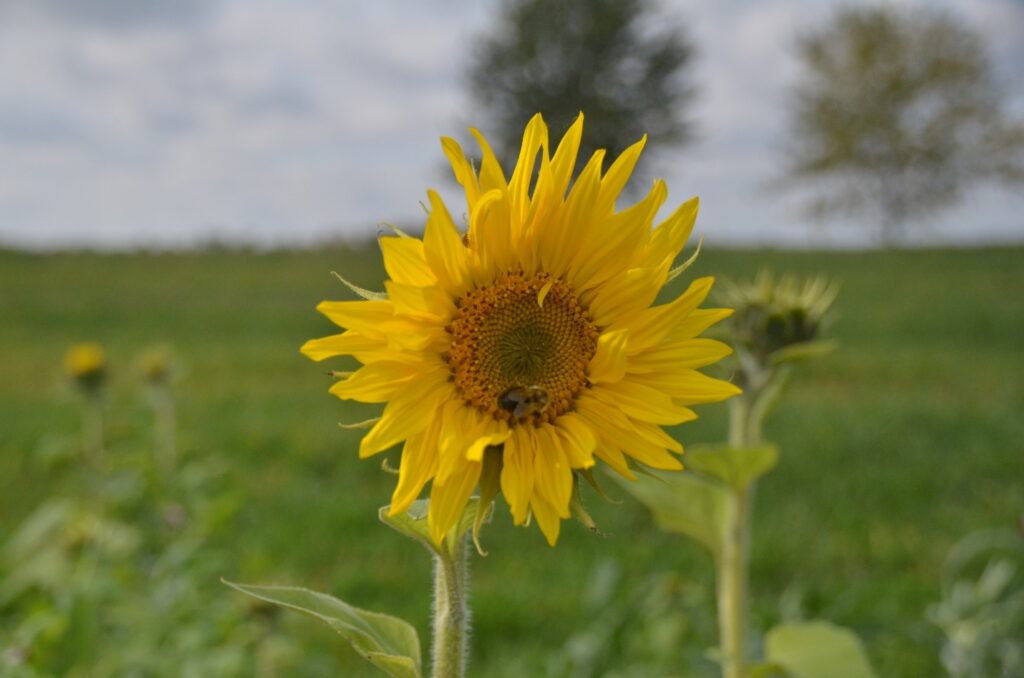
Figure 7. Flowering cover crops such as sunflowers can attract beneficial insects, including pollinators like bees.
Cover crops can be helpful in controlling or suppressing pests; however, the opposite can be true. For example, an overwintering grass cover crop like cereal rye can attract black cutworm or true armyworm and act as a green bridge for larval feeding on the following corn (or possibly soybean) crop if not terminated early enough in the spring. Thick residue from terminated cover crops combined with reduced tillage may also provide a favourable habitat for slugs and could increase risk of slug feeding and crop stand loss. It is important to consider pest interactions when choosing a cover crop and its management.
Soil structure improvement and compaction reduction
Cover crops can help improve soil structure and address compaction. Aboveground material and roots help to improve water infiltration and water holding capacity by protecting the soil surface and creating greater soil pore space. Cover crops can also decrease soil bulk density.
Fibrous-rooted cover crops can improve trafficability and reduce compaction risk, while certain deep-rooted cover crops can create biopores to help alleviate past compaction. For example, red clover, alfalfa, sorghum-sudangrass (when mowed), and daikon radish can all provide some root penetration through compacted soil layers. The longer the cover crop is grown, (e.g., full season red clover vs. fall-terminated,) the greater the benefit. If deep tillage is used to loosen compacted soil, seeding a cover crop afterward can help to stabilize the cracks and fissures that are created in the soil profile.
Water management
Cover crop residues can be used to provide a soil mulch for the following crop and help to reduce moisture loss. In contrast, some growers use cover crops such as cereal rye to reduce soil moisture in early spring. The plant takes up the moisture, incorporates it within tissues and transpires the rest, thereby removing water from the soil. This effect typically overcomes the mulching effect of the cover crop’s vegetation once stem elongation occurs, and water is transpired at a high rate (usually around early to mid May in southern Ontario).
Caution: this use of cover crops requires very good management and understanding of plant growth habits. Under warm wet conditions some cover crops can become very difficult to control either with tillage or chemically. Also, under dry spring conditions the cover crop should be controlled earlier to prevent excessive moisture loss which may interfere with crop establishment and growth.
Additional forage
Cereals can provide high quality forage or grazing when managed properly. Common double cropping practices in Ontario for harvested forage include seeding oats for oatlage after winter wheat or harvesting winter triticale or cereal rye (Figure 8) ahead of corn or soybean planting in spring. Sorghum sudangrass is also grown as an annual forage, in some cases double-cropped after cereal harvest. Care must be taken to avoid prussic acid poisoning following frost with sorghum and sorghum sudangrass. These “cover crop forages” can provide a critical source of feed under adverse conditions and feed shortages due to drought or winterkill, but in many cases are a planned part of the crop rotation.
More information on managing annuals for forage production can be found in Publication 30: Guide to Forage Production[LR3] .
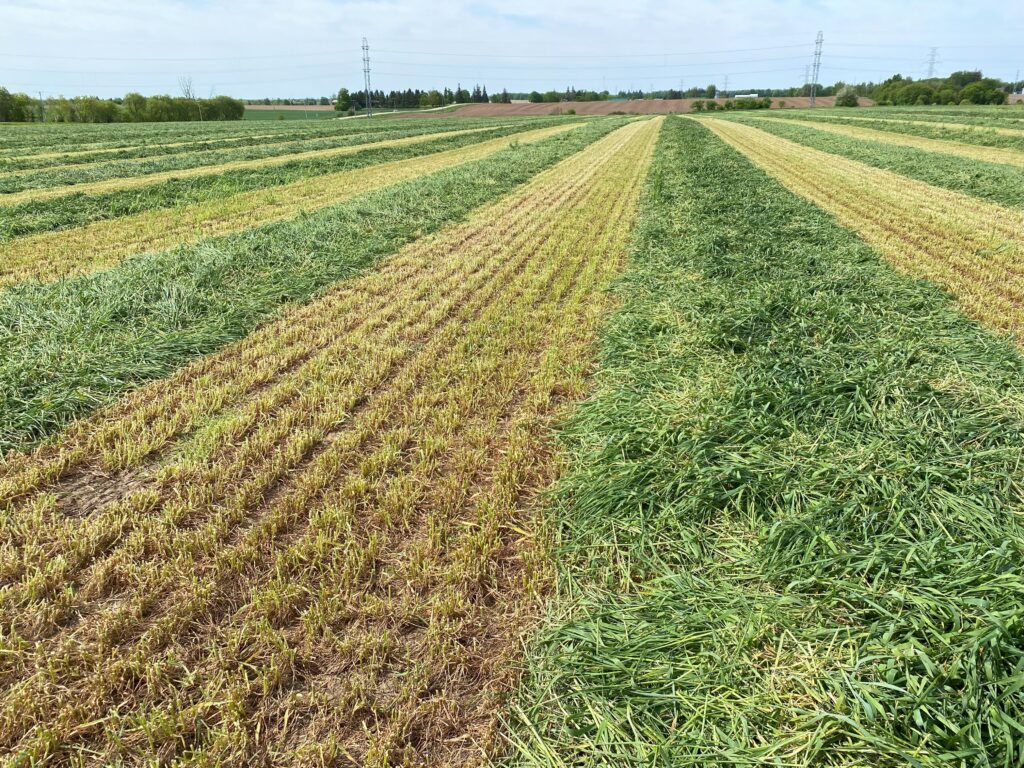
Figure 8. A windrowed winter cereal grown as an annual forage in a double cropping system.
References
Chahal, I., Vyn, R. J., Mayers, D., & Van Eerd, L. L. 2020. Cumulative impact of cover crops on soil carbon sequestration and profitability in a temperate humid climate. Scientific Reports. 10(1), 13381. https://doi.org/10.1038/s41598-020-70224-6.
Crop Protection Network (CPN). 2024. https://www.thescncoalition.com/state-information/university-coalition-experts/ontario-ministry-agriculture-food-and-rural-affairs-university-guelph/. Accessed May 28, 2025.
Harbach, C. J., & Tylka, G. L. 2022. Assessing direct and residual effects of cover crops on the soybean cyst nematode, Heterodera glycines. Plant Disease. 106(5), 1486-1491. https://doi.org/10.1094/PDIS-12-20-2581-RE.
Macrae, M., H. Jarvie, R. Brouwer, G. Gunn, K. Reid, P. Joosse, K. King, P. Kleinman, D. Smith, M. Williams, M. Zwonitzer. 2021. One size does not fit all: Toward regional conservation practice guidance to reduce phosphorus loss risk in the Lake Erie watershed. Journal of Environmental Quality. 50, 529-546. https://doi.org/10.1002/jeq2.20218.
Van Eerd, L.L., Chahal, I., Peng, Y., & Awrey, J.C. 2023. Influence of cover crops at the four spheres: A review of ecosystem services, potential barriers, and future directions for North America. Science of The Total Environment. 858(2), 159990. https://doi.org/10.1016/j.scitotenv.2022.159990.